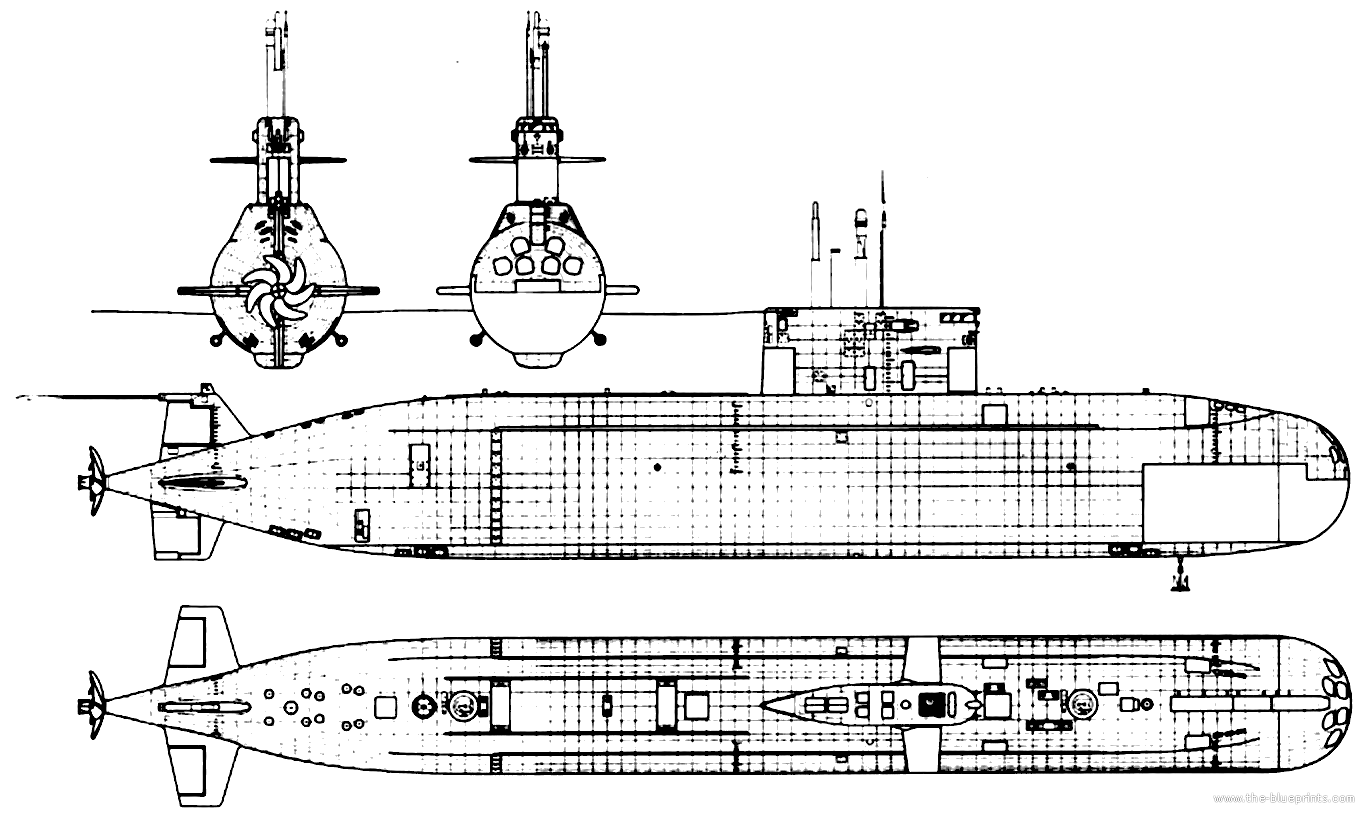The Project 677 Lada Class diesel-electric submarines are being
built by Admiralty Shipyard for the Russian Navy. The class is also called the
Petersburg Class, after the lead submarine.
The Lada Class succeeds the Kilo Class submarines.
The keel for the lead sub in class, Sankt-Petersburg (B-585),
was laid down in December 1997 and launched in October 2004. The submarine was
delivered to the Russian Navy in April 2010 and commissioned in May 2010.
Two submarines under construction are: Kronshtadt (B-586) - laid
in July 2005 - and Sevastopol (B-587) - laid in November 2006. The Russian Navy
plans to build a total of eight Lada Class submarines.
The Project 677 submarine is an improved version of the Project
636 Kilo Class with much quieter, powerful propulsion and new combat systems.
The fourth generation submarines can be deployed in anti-submarine warfare
(ASW) and anti-surface warfare (AsuW) operations, protection of naval bases,
reconnaissance and patrol missions.
The export variant of the Lada Class, the Project 1650 Amur
Class has been designed for markets such as India and China. Amur Class is
offered in various configurations with a displacement of 550t to 1,850t and
different weapon systems.
Lada Class design features

Lada Class diesel-electric submarines are designed by the
Russian Rubin Design Bureau. The ship incorporates a mono-hull design. The
surface displacement was reduced to 1,765t from 2,300t of the double-hulled
Kilo Class submarine.
The full submerged speed has been increased from 19 to 21kt and
crew complement has been decreased from 52 to 35.
The submarine has a trimmed profile equipped with sophisticated
torpedo and missile systems. The hull is covered with a new anti-sonar coating
for low acoustic signature.
Lada Class uses hydrogen-oxygen fuel cells generating
electricity for low noise operation. The submarine is fitted with Litiy
automated combat control system. The integrated system controls the combat and
technical systems of the submarine.
The Lada Class has a surface speed of 10kt and submerged speed
of 21kt. The propulsion system provides a submerged cruising range of 7,500nmi
at an economical speed of 3kt. The maximum diving depth is 300m. The submerged
displacement of the boat is 2,700t.
Weapon systems onboard the Project 677 Lada Class
diesel-electric submarines
Lada Class is armed with club-S submarine launched cruise
missiles. The missile can be fired from standard torpedo tubes.
Club-S carries up to 400kg warheads and can strike land and
naval targets within a range of 300km. The six 533mm torpedo tubes fitted on
the ship can launch up to 18 torpedoes, tube-launched anti-submarine and
anti-ship missiles.
The Lada Class submarines are fitted with modern sonar equipment
such as bow, flank arrays and towed array sonars. The Lira sonar system with
quasi-conformal (abutting the hull of the submarine) antenna can detect
low-noise targets located at long ranges.
The ship has an inertial navigation system for safe navigation
and determination of motion parameters. The system ensures the accuracy of
onboard weapons by providing guidance during long underwater operations. The
countermeasures are provided by the electronic support measures (ESM) system,
radar warning receiver and direction finder.
Propulsion and power of the Russian subs
The submarine's propulsion system integrates two diesel
generators, a main electric propulsion motor, two air independent propulsion
(AIP) systems and a single shaft driving on a skewed seven-bladed propeller.
The AIP system based on oxygen / hydrogen fuel cells increases
the Lada Class submerged endurance from 15 to 45 days. It also reduces noise by
avoiding the need for frequent battery recharge by diesel generators.
The diesel engine operating short time in the snorkelling mode
increases the endurance of the submarine. The submarine also has a storage
battery with an increased service life.
